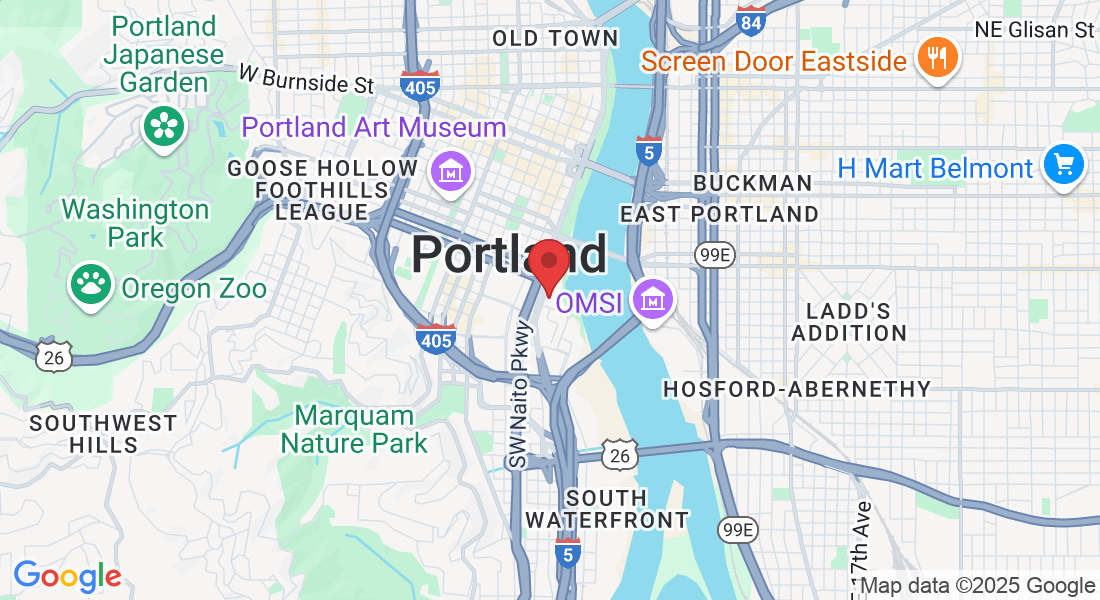1750 S Harbor Way Suite 100, Portland OR
Services
Bone Grafting in Portland, OR
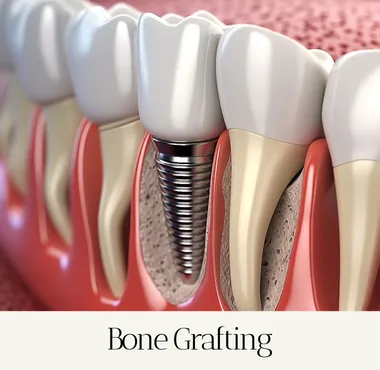
Bone Preservation & Augmentation for Long-Term Oral Health
At Malmquist Oral and Maxillofacial Surgery, we specialize in advanced bone grafting procedures to restore lost bone and preserve your jaw's structure—essential steps for long-term oral health, successful dental implants, and natural facial aesthetics.
Whether you’ve lost bone due to tooth extraction, trauma, gum disease, or infection, our expertise ensures you receive the highest level of care in a safe, precision-guided environment.
Why Bone Grafting Matters
When a tooth is removed and not replaced promptly, the underlying bone begins to deteriorate due to a lack of stimulation from the missing tooth root. Over time, this can cause the gums to recede and the jawbone to shrink—creating visible changes in facial appearance and limiting your options for tooth replacement.
Bone grafting is essential to:
Preserve the natural contours of your face
Support future dental implants
Restore bone lost due to trauma, gum disease, or infection
Prevent long-term complications after tooth extraction
We use grafting techniques tailored to each patient's anatomy and needs, often performing the graft at the same time as the dental implant procedure to streamline treatment and recovery.
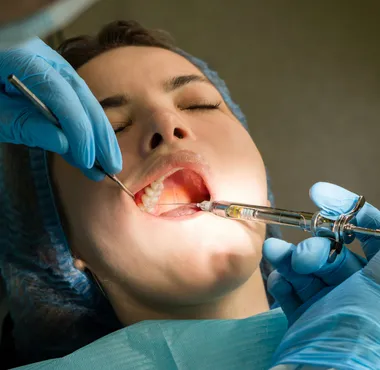
Benefits of Bone Grafting
Bone grafting offers more than just structural support—it restores function, enhances appearance, and opens the door to long-term oral health. Here’s how it can help:
✔️ Enables Dental Implants
A strong, stable jawbone is essential for dental implants. Bone grafting ensures there’s enough healthy bone to securely anchor implants for long-lasting results.
✔️ Preserves Facial Structure
Bone loss can lead to a sunken or prematurely aged appearance. Grafting helps maintain natural facial contours, especially in the front of the mouth where aesthetics matter most.
✔️ Prevents Future Bone Loss
By filling in gaps and reinforcing weak areas, bone grafting helps halt further deterioration and supports the longevity of your teeth and jaw.
Bone Grafting for Dental Implants
Sufficient Jaw Bone is Required for Dental Implants
After tooth extraction, if the walls of the socket are very thick, they will usually fill naturally with bone in two to three months. However, when the walls of your socket are very thin (such as in your upper and lower front teeth), this type of healing will not be as predictable. In these situations, a bone graft is often placed at the time of tooth extraction to help your body fill in the empty socket with bone. This step will maintain the width and volume of bone you will need for implant placement several months later.
1. Inadequate Bone
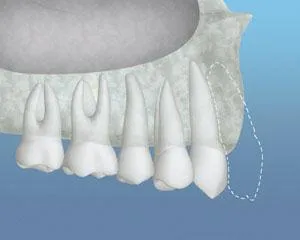
2. Graft Material Placed
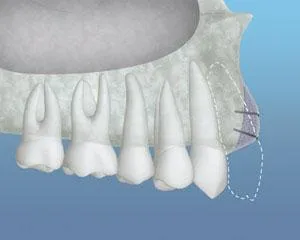
3. Implants Placed
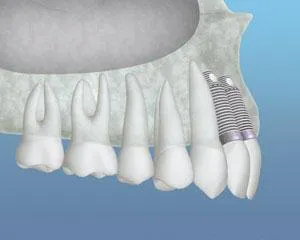
There may be inadequate bone for implant placement if your tooth was removed many years ago and your bony ridge is extremely thin. In this case, a bone graft can be placed next to the thin bone and allowed to heal for up to six months.
After the graft has fused to your pre-existing bone, the ridge will be re-entered and the implant placed. Bone grafting is usually a relatively comfortable office procedure. Many different bone-grafting materials are available, including your own bone.
1. Inadequate Bone
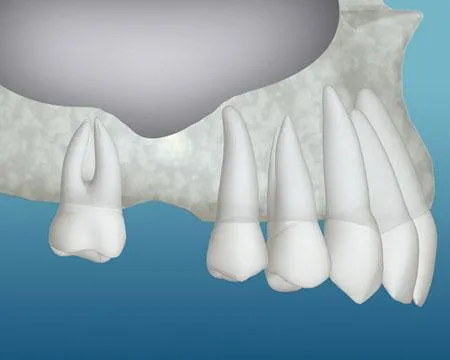
2. Graft Material and Implant Placed
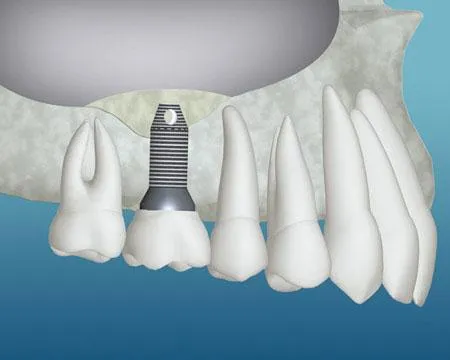
You may also need bone grafting if the sinus cavities in your upper jaw are very large, or very low, and extend into the tooth-bearing areas. This often occurs when teeth in the back of a person’s upper jaw have been removed many years before, and the amount of bone available for implant placement is limited.
A “sinus grafting procedure” is then required. Most often, it is performed in the office with local anesthesia and perhaps sedation. During this procedure, the membrane that lines the sinus will be located and elevated.
Bone will then be added to restore the bone height and ensure that dental implants of an adequate length can be placed. This procedure often can be performed at the time of implant placement.

5 Star Reviews
Our Clients Love Their Results
Why Choose Us?
When it comes to restoring your smile and preserving your jawbone, you deserve the best. Here’s why patients in Portland trust us with their bone grafting needs:
Expert Care & Experience
With over 14 years of experience in bone grafting and dental implants, our team of specialists is highly skilled in performing both simple and complex bone grafting procedures. We were part of the original clinical research team for BMP-2 (INFUSE), giving us cutting-edge expertise in bone regeneration technology.
State-of-the-Art Technology
We utilize the latest technology, including advanced 3D imaging and bone grafting techniques, to plan and perform precise, minimally invasive procedures. Whether you need a sinus lift or socket preservation, our advanced tools ensure the best results with faster recovery times.
Personalized Treatment Plans
No two patients are alike, and we treat every patient as an individual. Our treatment plans are customized to your specific needs, ensuring that you receive the most effective and comfortable bone grafting procedure tailored to your mouth and goals.
OUR PROCESS
From Graft to Implant
At our Portland practice, we ensure that the bone grafting process is as smooth, effective, and comfortable as possible. Here’s a breakdown of the steps involved:
1. Initial Consultation & Assessment
The process begins with a thorough consultation, during which we evaluate your oral health, discuss your medical history, and take detailed images (X-rays or 3D scans) of your jawbone. This allows us to determine the extent of bone loss and identify the best approach for your graft.
2. Customized Treatment Plan
Based on your individual needs, we create a tailored treatment plan. Whether you require a simple bone graft or a more advanced procedure like sinus lifting or socket preservation, we'll explain the options and recommend the most appropriate treatment.
3.
Bone Grafting Procedure
The bone grafting material is placed in the area of bone loss. For more complex cases, growth factors like Platelet-Rich Plasma (PRP) or BMP-2 may be used to accelerate healing and bone regeneration. In some cases, gum tissue may also be grafted to support the new bone.
"Visit Our Clinic Today"
New Client Special - 20% OFF

Over 540+ Happy Customers
Frequently Asked Questions (FAQs)
Answers to Your Most Common Questions
What is bone grafting?
Bone grafting is a procedure used to replace or rebuild bone tissue that has been lost or damaged due to factors such as trauma, disease, or tooth extraction. It involves placing bone material into areas of the jawbone that need support for dental implants, helping to regenerate and restore lost bone.
Why do I need bone grafting?
Bone grafting is often needed when the jawbone is too thin or weak to support a dental implant. This can happen after tooth loss, injury, or disease. Without enough bone, dental implants may not be stable or secure. Bone grafting helps restore the structure and volume of your jawbone, making it possible to place implants successfully.
How long does the bone grafting procedure take?
The length of the procedure can vary depending on the extent of the graft and the complexity of your case. Most bone grafting procedures take between 30 minutes to 2 hours. It can often be done in one appointment, and some procedures can be performed at the same time as dental implant placement.
Does bone grafting hurt?
Bone grafting is typically performed under local anesthesia, which numbs the area to ensure you feel no pain during the procedure. Some discomfort or swelling may occur afterward, but this is usually manageable with over-the-counter pain medication. Sedation options are available for patients who are anxious about the procedure.
How long does it take to recover from bone grafting?
Recovery time varies depending on the type of graft used and the size of the graft area. Generally, it takes about 3 to 6 months for the bone to heal and integrate with your natural bone, making it ready for dental implant placement. You may experience swelling or discomfort during the healing process, but this is usually temporary.
Will bone grafting affect my ability to get dental implants?
Bone grafting helps create a stable foundation for dental implants, allowing you to proceed with implant placement even if your jawbone is insufficient. After the bone graft heals, it provides the support necessary for a successful and lasting implant.

20% Off - First Visit
Schedule a Free Consultation
Experience Excellence in Oral and Maxillofacial Surgery


Copyright 2025. All Right Reserved.




